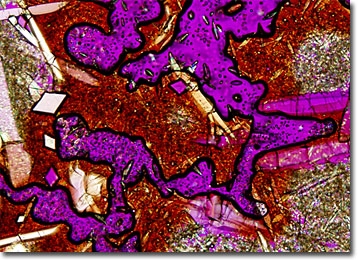Polarized Light Microscopy Digital Image Gallery
Dimethoxyhydroxycinnamic Acid
Sometimes alternatively known as sinapinic acid, dimethoxyhydroxycinnamic acid is often used as a matrix material in matrix-assisted laser ionization. The yellow-brown crystalline powder, which melts at about 203 degrees Celsius, is just one of many derivatives of cinnamic acid that have been introduced for this and other purposes.

Cinnamic acid is derived from the amino acid phenylalanine and may be extracted from plants for use or synthesized in the laboratory. The substance is perhaps best known as the phenolic compound that gives cinnamon oil its characteristic taste and smell. However, cinnamic acid and its derivatives can also be found in wine, where it contributes to the distinctive bouquet and color of various vintages. The presence of these substances in wine results from the grapes utilized to make the drink, since cinnamic acid derivatives are important metabolic building blocks in higher plants, facilitating the production of lignins.
Some evidence suggests that cinnamic acid exhibits antifungal, antibacterial, and parasite fighting properties. Indeed, known as storax or balm of Peru to early herbalists, cinnamic acid has played a part in a wide variety of medical treatments for centuries, especially as an expectorant and antiseptic. Early perfumers also commonly utilized this multi-purpose substance, which is today synthesized on a commercial scale from styrene and carbon tetrachloride. Modern use of cinnamic acid and its derivatives is widespread, gaining heavy use in the pharmaceutical, food, chemical, and perfume industries, among others.
